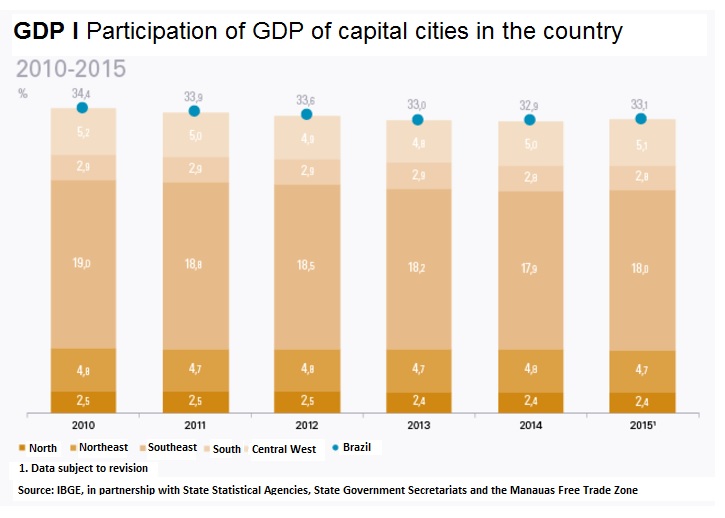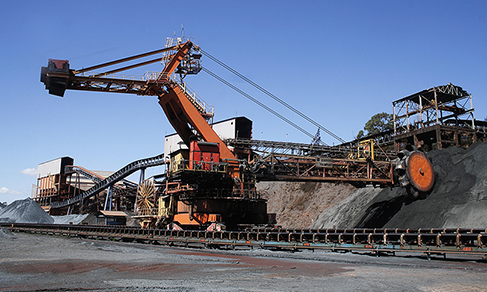Participation of capital cities in GDP records decrease
December 14, 2017 10h00 AM | Last Updated: December 14, 2017 01h38 PM
From 2002 to 2015, capitals lost 2.9 percentage points of participation in the national GDP. Other municipalities, on the other hand, recorded an increase of 2.9 (p.p). In 2002, 36.1% of the GDP came from capital sities, and that percentage fell to 33.1% on 2015. The contribution of other municipalities to the GDP increased from 63.9% to 66.9% , in the same period. All that is part of the survey 2010-2014 GDP of Municipalities, released to day (December 14) by the IBGE.
According to Frederico Cunha, researcher from the IBGE, industry and services were the main contributors to that result: “capitals had their participation reduced, mainly in industrial activities, with decrease of 4.1 percentage points (5.8 p.p) and in the activities of administration, defense, education and public education and health (1.7 p.p)”.

25 Brazilian municipalities held 37.7% of the GDP and the remaining 62.3% comes from the other 5,445
Among the 20 capitals which faced decrease in participation, Recife (-8.8 p.p), Belém (-7.9 p.p) and Vitória (-7.4 p.p) had the highest negative percentages.
“In the case of Pernambuco, the municipalities that increased participation in industry, except for the capital, Recife, were, mainly, Goiana and Ipojuca, where Suape's Industrial Port Complex is located. Those municipalities had increases of 4.7 p.p. and 14.6 p.p., respectively. Goiana doubled its participation in the state GDP and Ipojuca went even beyond”, says the researcher.
Also according to him. in Paraná, the municipalities of Marabá (2.6 p.p.), Parauapebas (3.3 p.p.) and Canaã dos Carajás (2.4 p.p) recorded increase of participation in the GDP.
In the case of Espírito Santo, Linhares (1.0 p.p), Marataízes (1.7 p.p), Itapemirim (3.3 p.p) and Presidente Kennedy (4.2 p.p) recorded an increase of participation in the GDP. All of those municipalities have in common the fact of being benefited by the extraction of oil and gas.
“Despite some changes towards deconcentration, GDP in Brazil is still highly concnetrated. In 2015, for example, 25 Brazilian municipalities concentrate 37.7% of the GDP and the other 5,545 shared the remaining 62.3%. Another conclusion regarding concentration is that the municipalities of São Paulo, with 10.9% of participatiom in the GDP, in 2015, was equivalent to the 4,300 municipalities with the lowest GDP in the country”, says Frederico.

Text (in Portuguese): Marcelo Benedicto
Design: Pedro Vidal
Image: Google Maps




















